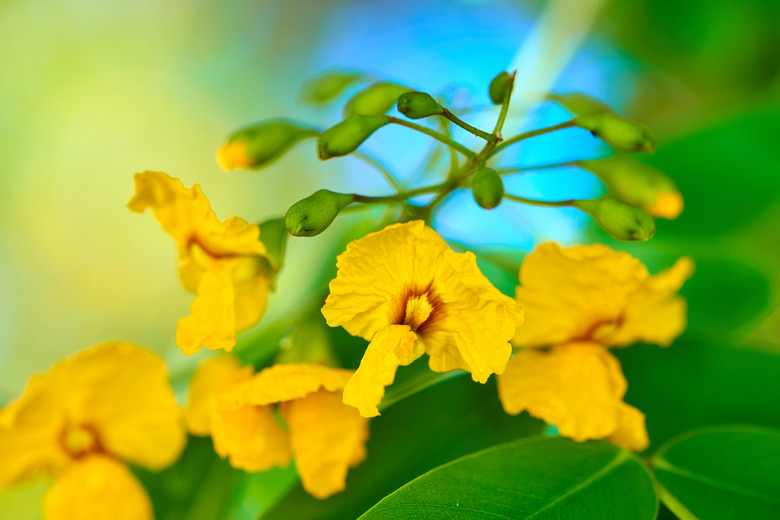How To Grow A Rosewood Tree (Tipu)
We may receive a commission on purchases made from links.
Commonly called rosewood, this tree species is more widely known by its scientific name, Tipuana tipu. Also called the tipu tree, it's a medium-size tree that grows 20 to 50 feet tall and blooms with small flowers in shades of bright yellow, orange, or apricot. The tipu rosewood tree is considered tropical, growing as a perennial only in U.S. Department of Agriculture plant hardiness zones 10 and 11 (marginal in zone 9), which includes areas that enjoy warm climates such as Hawaii.
Despite its preference for tropical climes, the tipu rosewood tree can tolerate temperatures down to about 40 degrees Fahrenheit. Grown with care, the tipu rosewood is a fast-growing tree that blooms generously. Here's what to know about growing a tipu rosewood tree.
Things Needed
How to Grow a Tipu Rosewood Tree
1. Prepare the Planting Hole
Plant the tipu rosewood in a spot that gets full sun. Dig a hole that is wider than it is deep. The rosewood tree requires a hole that is three to four times wider in diameter than the tree's root ball. The shallow depth is because the top of the root ball should be practically level with ground once the tree is planted.
2. Amend the Planting Site
Instead of amending the planting hole, which is not a recommended practice, incorporate organic compost into the entire planting site. Gauge the soil's condition and mix in amendments accordingly; if the soil is overly dry, sandy, or claylike, more amendments are necessary.
3. Loosen the Roots Before Planting
Remove the tree from any container it may be in. Gently pull and shake the roots and the soil at the edges of the root ball to loosen them before placing the tree in the hole.
4. Plant the Tipu Tree
Spread the roots out in all directions in the hole. Refill some of the removed soil into the hole and arrange it around the roots. Fill in the rest of the soil and pat it down firmly with the back of the shovel, making sure that the tree sits in the hole at the same depth as it was in its container.
Tip
When planting a young tree in a windy spot, place a stake in the ground and tie string from the stake to the tree to help hold it upright while it grows.
5. Water the Tree Appropriately
Water the soil around the newly planted tree deeply to help the soil surrounding the roots to settle. Place 1 to 3 inches of mulch on top of the soil around the tree, pulling the mulch back several inches from the trunk, and water again to help the mulch to settle and stay in place.
Tip
Note that the rosewood is used to hot, dry hot conditions, and it has a medium water usage rating. Following initial planting, water the tree only when several inches of its soil are dry.
6. Feed the Tipu Tree Regularly
Fertilize the tree each month throughout the spring and summer of its first growing year, according to soil-test recommendations. Use soluble fertilizer that mixes with water and apply it to the soil around the tree. In subsequent years, fertilize it once a year in the spring.
7. Prune to Promote Growth
Prune the tree carefully in its first two years in an effort to promote more prolific growth. Examine the tree's condition closely and thin it where necessary by pruning off dead or diseased branches. Whenever possible, leave the branch intact and simply pinch away the individual dead leaves and stems.
